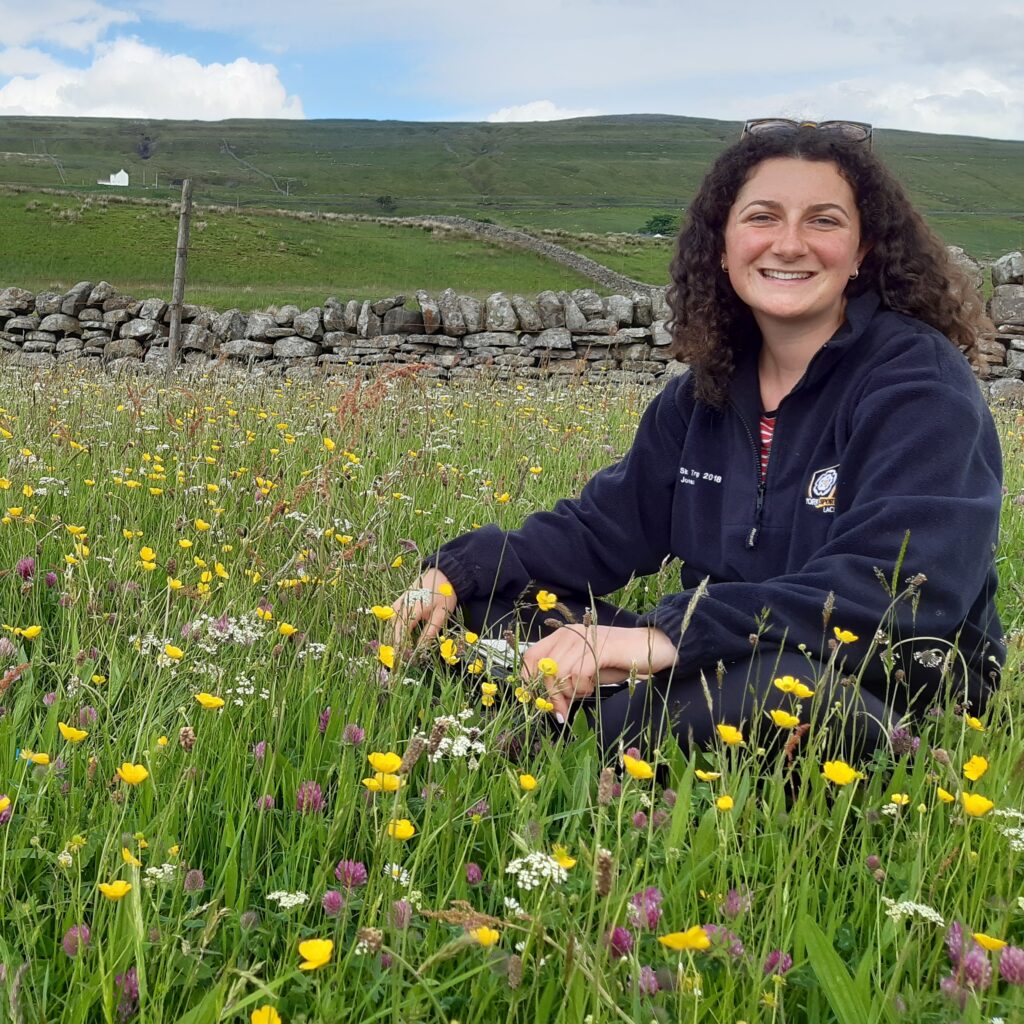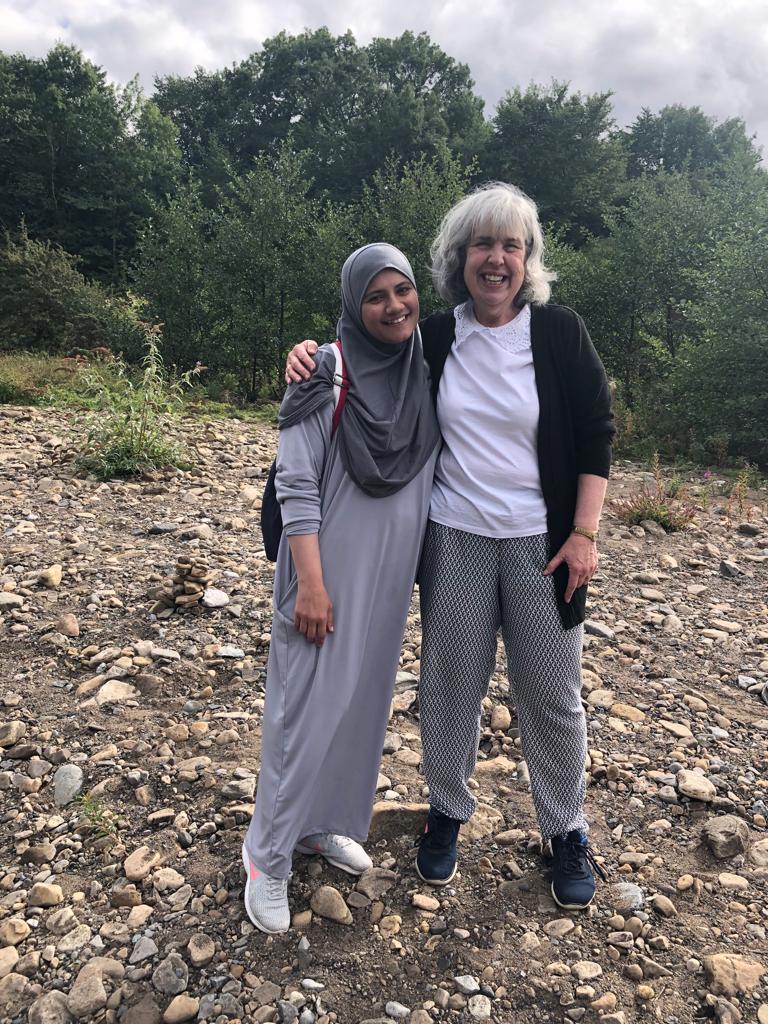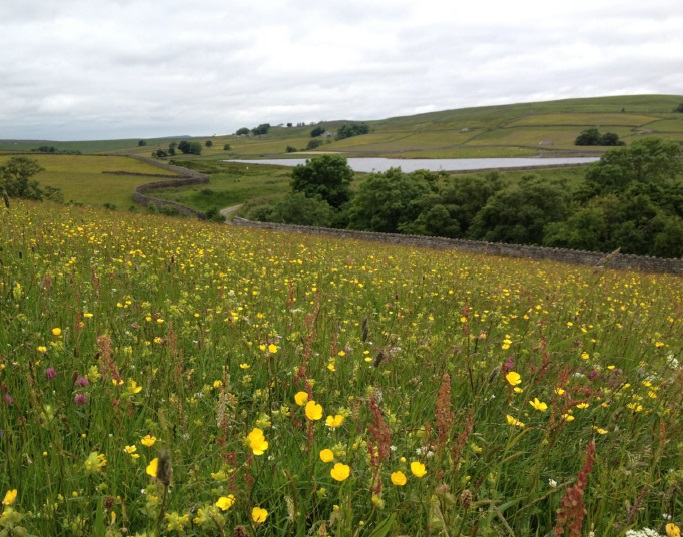What we do
Fellfoot Forward Village atlas
How to record oral histories
Embarking on the journey of capturing oral histories for a heritage project but feeling a bit overwhelmed about where to begin? In this ten-step guide, Harriet Tatton from DigVentures, unravels the essentials of conducting impactful oral history interviews so that you can be a part of preserving the rich tapestry of memories we all can contribute to our collective past.
Let’s delve into the steps of recording your interviews, recognising that an oral history project involves much more than just the interview process. There are broader considerations at the project level that demand thoughtful attention, so be sure to explore the resources available on the Heritage Fund website and the Oral History Society to understand the wider context of an oral histories project. Both resources have a treasure trove of guidance that aims to assist in preserving and sharing these invaluable stories to the best possible standards.
We’ll assume that your project is set up and you’re ready to do your very first interview. Let’s get started.
Step 1: Choose your storyteller(s)
Select people with a life story or a unique perspective on a particular event or topic that is relevant for your project. Consider older, under-represented, or overlooked community members, or those with significant experiences to share.
Your aim might be to highlight the experiences of a very specific group of people, perhaps due to their location, or background. Perhaps you want to capture memories of a particular town or village, so need people with experience of living there? Perhaps you’re finding out about the experiences of a particular demographic during a certain period of time, for example the Windrush generation? Alternatively, your project might have a broader theme, in which case it could be that you wish to seek and capture the reminiscences of a diverse group of interviewees.
You’ll need to advertise your project in ways that will encourage the type of people you’re seeking to sign up to be interviewed. This might be through clubs, societies and associations, social media, posting leaflets or posters in a particular area, or even via word of mouth.
Step 2: Establish trust and comfort
It’s important that you do your best to create a relaxed atmosphere for your storyteller. Prioritise building a rapport and establishing trust before delving into the interview. A good place to start is by supplying well-organised and key information about your project; perhaps you could start with a couple of phone calls to answer any questions or address any concerns your interviewee might have, particularly if this person isn’t someone you know well.
You’ll need to make sure you have copies of the correct project information forms and consent forms. These are absolutely vital as they will help your storyteller understand what you will be doing with their story, and also makes sure you will be able to share or keep hold of the recording. There are examples for you to download, edit and use on this page. If you’re volunteering for an established project, speak to your project manager, as they should have their own versions of these forms.
Typically, you’ll record the interview in the home of your interviewee, or another quiet and comfortable place of their choosing. Being in their own surroundings will help them feel more relaxed and confident, and could even help them with recalling their memories.
Step 3: Prepare thoughtful questions
Craft a list of open-ended questions that encourage detailed responses. Include inquiries about personal experiences, significant life events, and their perspectives on historical occurrences. Using open-ended questions is important, as it gives the interviewee the opportunity to lead the conversation and contribute information that they feel is important and relevant.
Try to avoid questions that might express your own bias or encourage your participant to answer in a particular way. For example, “How did that experience impact you?” is better than “Did you feel that experience had a negative impact on you?”
Plan for the interview to last 1 to 1.5 hours. Oral histories, even when fairly light-hearted, can be mentally and emotionally draining, and you and your interviewee will probably feel quite tired after 90 minutes. Have a mix of planned questions that will keep your project consistent but leave time for unprepared questions that come up as you actively listen to responses. If you feel you need more time, come back to finish the recording session on another day.
Make sure you’ve done your background research if necessary. Be aware of the theme of the project, and research relevant places, people, or events that might come up as part of the interviews. This will help you to understand the wider context of the conversations you have with your interviewees, which may inform the depth you’re able to get into with your participant.
Finally, end the interview questions by giving your participant a chance to say anything they feel might add to the oral history, for example “Is there anything else you want to talk about today?”
Step 4: Use the right equipment
If you’re running your own oral history project, you’ll need to invest in a good quality audio or video recorder to capture the interview effectively. If you’re volunteering for the North Pennines National Landscape, a recorder may be provided for you.
Test the equipment beforehand to ensure that the recording will be clear and audible. You may also want a tripod, to keep the recorder off a table. Sometimes you might also want a camera, to capture video footage as well as the audio recording.
Whatever equipment you use, it’s vital to make sure that you’re familiar with how your equipment works, so if you need to practice beforehand then do so. If you’re not sure where to start, find out the make and model of the audio recorder you’ll be using, search for the make and model on YouTube, where you’re likely to find tutorials on how to set up and use the device.
There’s more guidance on recording equipment on the Oral Histories Society website.
Step 5: Conduct a test run
Before the actual interview, perform a short practice session to ensure that the storyteller is comfortable with the recording process. This helps to alleviate any concerns and ensures a smooth interview experience.
This can be immediately before the start of the interview. Ask your participant a series of light-hearted questions so that you can test the equipment and help them to relax.
Once you’ve been talking for a few minutes, pause the recording and listen to it. Listen out for anything that’s affecting the sound quality such as:
- Open windows
- Noises from animals or pets
- Clothing rustling
- Jewellery jingling
- Traffic
- Other people talking
If necessary, you might need to adjust your equipment or your environment accordingly. Don’t start the interview until you’re happy with the quality of the recording and remember to press the record button before you launch into the interview proper.
Step 6: Respect privacy and consent
Prioritise the storyteller’s privacy and ask for their consent to record and share their story. Now is the time to make sure that your participant has read, understood, and signed the relevant forms. The idea is to reduce the amount of editing of an oral history that is required. Establish what will happen if they express any reservations about specific topics or aspects of their life.
Remember that you’ll go through this again at the end of the interview to give them chance to reflect on what they’ve said and finalise their consent for the interview to be included in the project.
The interviewee does have the right to ask for anything they’ve said to be redacted, so remember to give them plenty of opportunity to do so after the recording has taken place.
Step 7: Record the interview and actively listen
Before you start recording, let the interviewer know that although this will be a conversation, you won’t be doing any talking except to ask them questions.
You should explain that you won’t interrupt, nor will you make any vocalisations while they’re talking, reassure them that this is so that you’re not audible on the recording as they’re speaking, and not because you’re uninterested in their stories.
This is perhaps the hardest part to remember: as the interviewer, you must avoid the natural verbal ticks that we all tend to use when we’re listening to others talking; “uh huh”, “I see”, “yeah” “mhmm” etc. You want to avoid either party talking over one another during the interview so that the recording is as clear and easy to listen to as possible.
During the interview, actively listen to the storyteller’s words and emotions. Show empathy and understanding by nodding and using other non-verbal signals, allowing them to express themselves freely and authentically. Remember not to interrupt and, as the interviewer, to be silent during the participant’s responses.
Step 8: Capture additional context
You might want to supplement the interview with photographs, documents, or other relevant materials that provide context to the narrative. These additions can enrich the storytelling and create a more comprehensive historical record.
This isn’t always necessary but it’s worthwhile considering with the project manager and asking your subject what they have and are happy to share.
Step 9: Document, transcribe and redact your interview
As a minimum, you’ll need to produce a summary of your interview. This should cover the main topics that were discussed and provide time signatures so that people can easily locate key points in the recording.
If necessary, transcribe the interview. This is the most time consuming and difficult part of the process, but there are software options that can help. Websites, such as Otter.ai, offer free transcriptions that are created by uploading or playing your audio file while artificial intelligence transcribes the recording. Artificial intelligence will give you a starting point, but the transcript will need to be thoroughly edited.
You can find guidelines for producing good transcripts online, such as the guidance provided by the University of Leicester.
Not all projects will require full transcripts of interviews, so check with your project manager to ensure you’re clear about what is needed. If your participant expressed a desire for any part of the interview to be redacted, now is the time to ensure that has been done.
Step 10: Share and archive
Share the recorded oral history with the appropriate project manager, community, or organisation, ensuring that the storyteller’s legacy is preserved and celebrated. Ensure you hand over the consent forms, and unedited audio files, as well as any other relevant documentation.
At the end of the project, the project manager will archive the interview for future generations to learn from and appreciate. Also make sure you consider local history groups and other archives that might appreciate the content.
What next?
Below is further information that will help you to get started with your oral histories and, of course, how much of it is relevant to you will depend on your role within the project. There are also several examples of other oral histories projects to inspire and encourage you.
Equipment checklist:
Essentials:
A good quality audio recorder capable of recording in .wav format to the specifications recommended by the Oral History Society
Charging cable/spare batteries as appropriate
A recording agreement form
A participant consent form
A project information sheet
Nice-to-haves:
Microphones that work with your audio recording device
A tripod that can hold your recorder
A camera capable of recording video
Further resources:
You can see the forms from the Fellfoot Forward scheme’s oral history project: Fellfoot Forward project information sheet example, Fellfoot Forward scheme participant consent form example, and Fellfoot Forward scheme interview recording agreement example or click on the links in the right hand menu.
The Oral History Society – lots of helpful resources and training courses.
University of Leicester East Midlands Oral History Archive – in depth guidance on all aspects of oral histories projects from set-up to sound editing and archiving.
Read more about the Uncovering the Past project and view the film offering a taste of the oral histories created through the Fellfoot Forward Landscape Partnership Scheme as inspiration.
Oral histories project examples:
Fellfoot Forward Landscape Partnership Scheme’s Uncovering the Past oral histories
British Library Oral History Collection
High Fell: The Cumbria Landscape Story

















